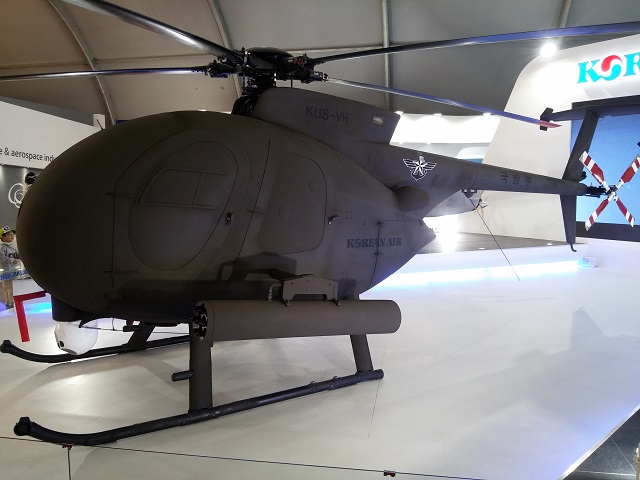Boeing and Korean Air have signed a memorandum of agreement to jointly develop the MD Helicopters MD500 into an unmanned attack platform.
The US firm will provide extensive technical support for the programme, and the two companies will market the rotary-wing UAV to the export market, says Boeing.
“Korean Air successfully remodelled the South Korean air force’s retired MD500 helicopters to unmanned helicopters from 2014 to May 2016,” says Boeing. “Based on this success, Korean Air launched a new project that will run until 2017 to remodel MD500 helicopters into unmanned armed helicopters.”
The unmanned rotorcraft will be operable in both day and night conditions, and will conduct precision strikes, the partners say.
The agreement was signed between Korean Air chairman and chief executive Yang Ho Cho, and Boeing chief executive Dennis Muilenburg.
At the 2015 edition of the Seoul Aerospace & Defence Exhibition, the aerospace unit of Korean Air, KAL-

Greg Waldron/FlightGlobal
Boeing had already provided extensive technological expertise for the KUS-VH programme as part of its offset obligations related to South Korea's 2013 decision to purchase 36 AH-64E Apache attack helicopters. The KUS-VH draws on Boeing’s work with its unmanned H-6U Little Bird programme.
The KUS-VH gains a large fuel tank in place of the cabin's rear passenger seats, increasing endurance to 4h compared with 2h for the manned variant of the MD500.
The South Korean government has no formal requirement for such a platform, but KAL-
KAL-
Source: FlightGlobal.com



















